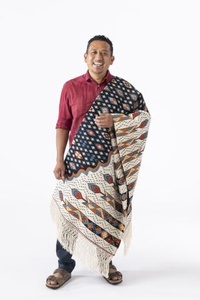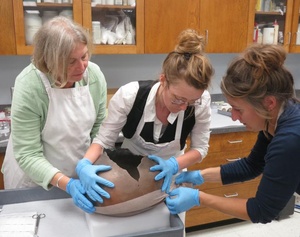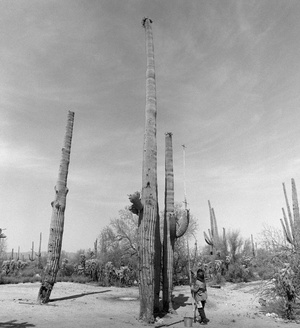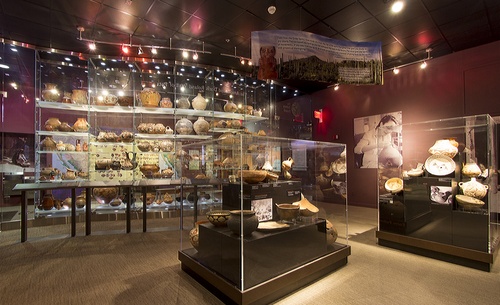About the Museum
The Arizona State Museum was founded in 1893. It is located on the University of Arizona campus in Tucson, Arizona. This museum is operated and owned by the University of Arizona, and is the oldest and largest anthropological museum in the Southwest. Arizona State Museum (ASM) serves as its official archaeological repository and as the permitting authority for archaeological activity on state land. The museum holds unique pottery, jewelry, baskets, textiles and clothing from the past. It also has many Ethnological items, which are items that are not acquired by excavation. This means that these items have been further donated by the Native American Tribes or acquired from other individuals. The Arizona State Museum is a place that is sacred for research, learning, and understanding history. The museum has also been serving the state, university, and the community for 127 years!
Other key factors which make this museum special compared to others:
-
Being the largest anthropological museum, standing at 38,00 cubic feet
-
The museum holds artifacts that date back as far as 13,000 years
-
Contains the worlds largest Native American basketry (35,000 specimen) and pottery collection (24,000 specimen)
-
ASM has one of the largest conservation lab's and preservation programs that hold work-renowned titles
-
Holds regular program's and instruction for people of all ages where they can learn about the history of the museum and the artifacts inside of it.
-
Arizona State Museum is an affiliate of the Smithsonian Institution and accredited by the American Alliance of Museums
ASM Research, Zooarchaeology, and Preservation
Many of the archaeology, anthropology, design and art students use the libraries provided by this museum. The Office of Ethnohistorical Research conducts research on southwest United States and northern Mexico people. This library holds over 8,000 sources of information ranging from indexes to important archive collections, maps, and more. The Office of Ethnohistorical Research also includes Documentary Relations of the Southwest which is an online index with over 17,000 documents. All of the documents from the Documentary Relations of the Southwest are generated from the Spanish Colonial period. These documents hold a lot of history about the relationship between the Native Americans, Spanish Colonials, and catholic missionaries related to each other. The Point of Pines Pottery Research is another one of ASM's most renowned research project. It developed in the 1940's and 50's, the San Carlos Apache Indian Reservation and helped the museum recover one of the largest and unique pottery collection. This research, comprised of professionals, grad students, and Native Americans helps people understand the migration of the Native American as well as the art and history. The connection the museum has with native tribes helps preserve and understand the native communities that are so prominent in the Southwest region of the U.S.
Martin H. Welker (Left) is the Assistant Curator of Zooarchaeology at the Arizona State Museum where he explores human-decision making processes. He also looks at the interaction between human communities with wild and domesticated animals. Zooarchaeology is the study of non-human animal remains that specifically relate to the identification of animal species. Zooarchaeologists are interested in the relations between animals and humans. They study the human diet, food procurement, domestic animals, economics and trade, use of animals in rituals and more. Zooarchaeologists also study the genetic and physical changes of animals as a result of being domesticated. In order to identify the remains of animals from archaeologist sites, Zooarchaeologists use skeletal reference collections.
Zooarchaeology is connected to the Stanley J Olsen Laboratory of Zooarchaeology collection with a total of 4,000 vertebrate specimens of 600 different species including fish, bird, reptile, mammal etc. The Olsen laboratory includes a small collection of references that are also available for researchers to use. It is even open to students, staff and the public. The collection has been used for years in the past as reference to many courses at the University of Arizona.
Here is a YouTube video on more information on the National Impact of Stanley J. Olsen Laboratory: https://www.youtube.com/watch?v=bZ7f51-wVq8&t=78s
Preserving is key for what makes Arizona State Museum so special. The ASM Preservation Division, was ran by Nancy Odegaard (retired January 1). She gave professionals, graduate students, and scholars an opportunity to experience a real-world and hands-on experience to analyze and preserve historical artifacts that are given to the museum. The museums conservation lab was first established in the 70's. Nancy Odegaard completely transformed the art of conserving at the ASM by combining chemistry, engineering, anthropological principles and scientific methods to conserve objects like pottery, clothing, photographs and art. The conservation lab researches artifacts, works on mitigating pesticides/residue on museum objects, upkeep on objects already obtained by the museum, and by taking protocols for the care of human remains in academic institutions. The museum holds workshops for students and volunteers who want to learn more and have a hands-on experience to artifact preservation.
Museum Exhibits
Wrapped in Color: Legacies of the Mexican Sarape
(Now through July 2022)
 Porfirio Gutiérrez, creator of Wrapped in Color
Porfirio Gutiérrez, creator of Wrapped in Color
This exhibit explores the origins, dissemination, and current importance of the Saltillo sarape design. Mexican Saltillo sarape expresses Indigenous, Spanish, and Mexican history, traditions, and textile techniques through language of color and design. You also learn about how wild plants and insects grow and even produce dyes through Porfirio's exhibit.
Saving an American Treasure: An Unparalleled Collection of Anthropological Photographs
(ongoing)
ASM is notorious for its large and extensive collection of anthropological photographic materials. This exhibit is comprised of over half a million prints that include negatives, transparencies and movie films that are centered around U.S Southwest and Northwest Mexico's cultures and traditions. Some of these anthropological photographs date as far back as 13,000 years.
The Pottery Project
(ongoing)
This exhibit is the most renowned pottery collections in the world, holding over 24,000 different vessels and 500 choice specimens. It has features that are interactive, interviews the pottery makers and archeologists, and hands-on experiences for children. The museum offers an online virtual reality tour and an in-depth YouTube video overview of the The Pottery Project, which allows users to have the in-person museum exhibit experience without actually being in the museum.
OnView, OnLine, OnDemand
The museum has online exhibits that people can access through their website due to COVID-19. You are able to virtually examine the museums exhibits, photographs, and artifacts which includes their pottery, woven basket collections, ceramics, native clothing, weapons, and their extensive photography collection. It also provides a place where teachers and students can access resources to learn about the museum. Finally, the museum included an on-demand feature on this part of the website, where people can take masterclasses, join visual tours/conversations and access over 70 different videos pertaining to the museum and the artifacts that inhibit it.
This YouTube video below is just one of many Behind-the-Scene online tours that the ASM has provided on its website, which talks about the basketry collection at the museum: https://www.youtube.com/embed/NQDaXGGgzIw
Contact
Arizona State Museum
The University of Arizona
1013 E University Blvd
PO Box 210026
Tucson, AZ 85721-0026
520.621.6281 (Administration)
Sources
https://statemuseum.arizona.edu
https://statemuseum.arizona.edu/visit/collections/library-and-archives
https://www.smithsonianmag.com/museumday/venues/museum/arizona-state-museum/








